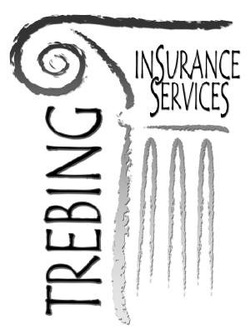Large Group Vs Small Group Health Insurance: Best Pick For You
Large Group vs small Group Health Insurance typically offers standardized benefits to companies with many employees. In contrast, small-group health insurance allows for more personalized plans in smaller business settings.
Navigating the distinction between large and small-group health insurance is crucial for any business. The size of your employee base significantly influences the options and regulations you face when selecting a health insurance plan. This choice impacts your financial bottom line and is crucial to employee satisfaction and retention.
Therefore, it’s essential to understand the specifics of each insurance type. Large group insurance often entails lower per-person costs due to economies of scale. In contrast, small group plans can offer greater flexibility and may cater to the unique needs of employees. Both insurance types are regulated differently, with distinct requirements and advantages. The choice depends on company size, budget constraints, and desired coverage benefits.
:max_bytes(150000):strip_icc()/crowdfunding.asp-final-631f299b9cdb408cb08288b305f78440.png)
Credit: www.investopedia.com
Coverage
Coverage is a crucial factor to consider when choosing between large-group and small-group health insurance. Both types of insurance offer a variety of benefits that cater to different organizational needs. Understanding these benefits can guide businesses in selecting the right healthcare plan for their teams.
Benefits Of Large Group Health Insurance
- Greater bargaining power leads to more extensive coverage options.
- Customizable plans to meet the specific needs of a large workforce.
- Offers comprehensive wellness programs that promote health and productivity.
- Lower costs per employee due to economies of scale.
- Pre-existing conditions are often covered without additional cost.
Benefits Of Small Group Health Insurance
- More personal and tailored service for individual employee needs.
- It enhanced employee-employer relationships through shared decision-making in coverage.
- Cost-effective solutions designed for small business budgets.
- Tax incentives may be available to provide health insurance to employees.
- Simplified plan options make it easier for employees to choose coverage.

Credit: louannetrebing.com
Cost
Understanding the cost implications of health insurance is a critical factor for any business. Whether considering large-group or small-group health insurance, the differences in premiums can significantly impact your company’s budget.
Premiums For Large Group Health Insurance
Large group health insurance often offers more stable premiums due to the risk spread across a larger pool of members. Benefits of large group plans include:
- Better risk distribution
- Greater purchasing power
- Potential for customized plans
These factors can lead to lower premium costs per employee, making it a cost-effective option for larger companies.
Premiums For Small Group Health Insurance
Small group health insurance premiums are generally higher per-employee basis due to a smaller pool of members to spread the risk. Key points include:
- Higher per-employee costs
- More susceptibility to individual health statuses
- Options for tax credits to offset costs
Small businesses can benefit from premium tax credits and the SHOP Marketplace despite higher costs.
| Insurance Type | Cost Advantage | Company Size |
|---|---|---|
| Large Group | Lower premiums due to the risk pool | 50+ employees |
| Small Group | Aid from tax credits | Less than 50 employees |
Customization
Choosing between large-group and small-group health insurance often comes down to customization. Companies need plans that fit their unique needs. Tailored solutions can support a diverse workforce, and custom benefits can improve job satisfaction. Understanding flexibility in plan options is vital.
Flexibility In Large Group Health Insurance
Large group health plans boast extensive customization. Businesses can negotiate terms. They offer varied plan designs. Choices can align with company needs and employee preferences. Here’s what stands out:
- Wide range of options: Plans may include exclusive provider organizations (EPOs), health maintenance organizations (HMOs), preferred provider organizations (PPOs), and more.
- Benefit-rich packages: Companies can design comprehensive coverage that may go beyond health care, like wellness programs and employee assistance.
- Negotiable premiums: Due to the larger pool size, premiums are often more negotiable, potentially leading to cost savings.
Flexibility In Small Group Health Insurance
Small-group health insurance also offers flexibility but in different ways. These plans balance coverage and cost. Small businesses find them more accessible to manage. Key aspects include:
- Standardized plans: Small group options sometimes have more standardized offerings, making the selection process more straightforward.
- Budget-friendly: They provide essential coverage without the more significant price tag, which is vital for smaller budgets.
- Community-rated premiums: Premiums are based on regional rates rather than the health status of the group, offering predictability.
Both large and small group plans offer flexibility. The right choice depends on company size, budget, and coverage needs. Tailored options help cater to employee well-being.
Provider Networks
Choosing the right health insurance is vital to accessing good healthcare. Provider networks are a central piece to this puzzle. This part of your plan describes which doctors and hospitals you can use. It also affects how much you pay. We will look into the networks offered by large group health insurance plans as opposed to small group health insurance plans. Understanding these differences will guide you in selecting the best option for your health needs and budget.
Access To Healthcare Providers In Large Group Health Insurance
Large group health insurance plans often boast broad provider networks. This means you can choose from many doctors and hospitals. The key points about these networks include:
- Wide Selection: You have a long list of providers to pick from.
- Flexibility: These plans allow you to see specialists without referrals.
- National Coverage: Often, large groups provide options to accommodate the country, which is perfect for those who travel.
Such extensive networks can be beneficial. You care where you want it, oftengettingng to get a referral first.
Access To Healthcare Providers In Small Group Health Insurance
Small-group health insurance networks might be more limited. However, they can still offer quality options. Consider these points about their provider networks:
- Local Focus: Networks tend to be more regional, centering around a specific area.
- Cost Savings: These focused networks can mean lower premiums for members.
- Referral System: Seeing a specialist may require a referral to manageg your healthcare journey.
Small group plans often encourage strong relationships with primary care providers. This can be advantageous for consistent and coordinated care.
Regulations
Understanding the regulatory landscape is crucial for businesses navigating health insurance options. Why? Rules differ for large and small groups. Compliance ensures legality and contributes to the well-being of employees. This section outlines specific regulations each type of group must follow.
Regulatory Requirements For Large Group Health Insurance
Large group health insurance pertains to companies with more than 50 employees. Regulatory demands are stringent:
- ACA Compliance: Must meet Affordable Care Act standards.
- Reporting: Regular reports to the IRS on coverage offered.
- Essential Health Benefits: Not mandated to offer, but often do.
- No Rate Restrictions: Premiums are based on overall risk assessment.
| Aspect | Requirement |
|---|---|
| ACA Compliance | Mandatory |
| Reporting | To IRS |
| Essential Benefits | Optional |
| Rate Setting | Risk-based |
Regulatory Requirements For Small Group Health Insurance
For small groups with fewer than 50 employees, specific requirements shape their health insurance landscape:
- ACA Compliance: Must provide essential health benefits.
- Community Rating: Rates not based on health status.
- SHOP Marketplace: Access to plans through the Small Business Health Options Program.
- Tax Credits: Potential credits for eligible small businesses.
| Aspect | Requirement |
|---|---|
| ACA Compliance | Essential benefits required |
| Community Rating | Mandatory |
| SHOP Access | Available |
| Tax Credits | For eligible businesses |

Credit: www.flexjobs.com
Employee Eligibility
When choosing health insurance, businesses must understand who qualifies for coverage. Employee eligibility varies by group size. Let’s explore the criteria for both large and small groups.
Eligibility Criteria For Large Group Health Insurance
Large companies offer health insurance to many employees. The rules can differ across states. Here are the common factors:
- CompanBusinessesusinesses with more than 50 full-timetypically workers qualify as large groups.
- Employment status – Employees working full-time, usually over 30 hours a week, are eligible.
- Waiting period – Companies may have a set time before new hires can join the plan.
- Inclusion of dependents – Spouses and children often get coverage too.
Eligibility Criteria For Small Group Health Insurance
Small businesses have unique guidelines. Here’s what dictates eligibility:
- Company size – Firms with up to 50 full-time employees typically fall into this category.
- Minimum participation – A certain number of employees must enroll for the plan to be valid.
- Work hours – Part-time staff may be eligible if they meet minimum work hours.
- Owner eligibility – Business owners and partners can often join the group plan.
Decision Making
Choosing the right health insurance for a group requires careful consideration. A workplace must weigh the benefits and drawbacks of large and small group health insurance. This decision impacts costs, coverage, and satisfaction. Let’s explore the vital points to consider for each option.
Considerations For Choosing Large Group Health Insurance
- Extended coverage options: Typically offers more benefits and features.
- Cost-effectiveness: Larger pools may lead to lower premiums due to risk spread.
- Policies and bureaucracy Often come with complex administration but robust support systems.
- Customization: Less freedom for individual customization but may offer enhanced overall plans.
- Employee numbers: Only available for organizations with 50 or more members.
Considerations For Choosing Small Group Health Insurance
- Size limitations: Tailored for companies with fewer than 50 employees.
- Cost considerations: You might see higher per-person costs due to smaller risk pools.
- Management simplicity: Often easier to manage with less paperwork involved.
- Customizable plans: More flexibility to alter coverage to meet the group’s needs.
- Networking: Potentially more restricted networks, impacting doctor and hospital choice.
Frequently Asked Questions For Large Group Vs. Small Group Health Insurance
What Is The Difference Between A Large Group And A Small Group?
A large group consists of many individuals, typically over 10, fostering diverse ideas but more complex coordination. Small groups are usually under ten people, allowing for closer interacmore straightforwardd simpler decision-making.
What Is A Large Group Health Insurance?
A large group health insurance plan provides coverage for many employees, typically in a company with over 50 full-time employees. These plans offer various health benefits and are governed by specific regulations.
What Does Small Group Mean In Insurance?
AIn insurance, a small grouprefers to a business with a limited number of employees, typically between 1 and 50, eligible for group health insurance plans.
How Do You Determine Group Size For Health Insurance?
To determine the group size of health insurance, consider the number of full-time employees. Include full-time equivalents if part-time workers exceed the full-time threshold. Check state laws, as definitions may vary. Always consult with an insurance provider for precise calculations tailored to your business.
Conclusion
Navigating the healthcare insurance landscape can be complex. Both large and small group health insurance options have their benefits, tailored to different business needs. Consider your company size, resources, and employees’ needs when choosing. The right plan will offer peace of mind and stability for everyone involved.
Choose wisely and secure your team’s health future.












